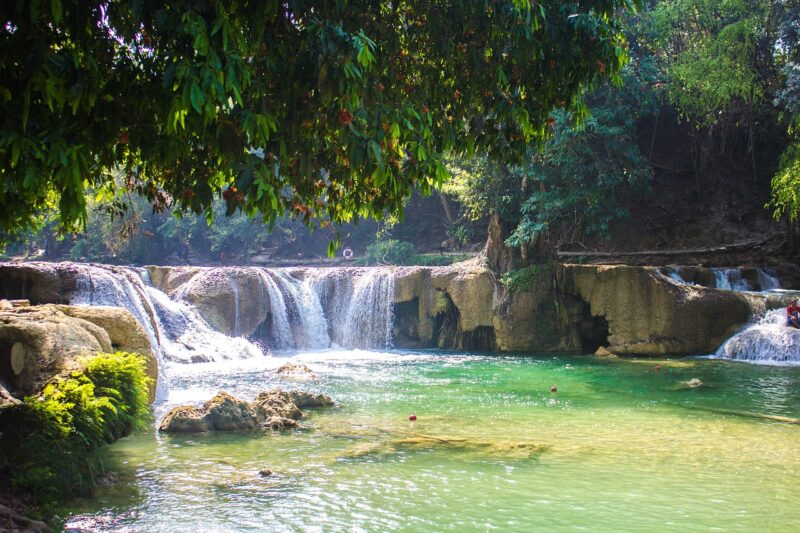In an era where wanderlust is at its peak, the concept of tourism has evolved significantly. Travelers no longer seek just destinations; they yearn for experiences that connect them with the world while preserving the environment. This transformation has given rise to “low-impact tourism,” a responsible and sustainable way of exploring the beauty our planet has to offer. In this article, we will delve into the essence of low-impact tourism, its principles, benefits, and how you can be a responsible traveler.
Table of Contents
Introduction to Low-Impact Tourism
What is Low-Impact Tourism?
Low-impact tourism, often referred to as sustainable tourism or eco-tourism, is a travel approach that prioritizes minimizing the negative impacts on the environment, local communities, and culture while maximizing the positive ones. It’s about making choices that help protect our planet’s natural wonders and cultural heritage for future generations.
The Importance of Responsible Travel
The allure of pristine beaches, lush forests, and captivating cultures draws travelers from across the globe. However, the consequences of mass tourism, such as overcrowding, pollution, and cultural degradation, have become increasingly evident. Low-impact tourism recognizes these issues and seeks to provide an alternative path, one that lets us explore the world without leaving a detrimental footprint.
The Principles of Low-Impact Tourism
Leave No Trace
The fundamental principle of low-impact tourism is leaving no trace behind. Travelers are encouraged to follow the “pack in, pack out” mantra, ensuring that the places they visit are as beautiful when they leave as they were when they arrived.
Minimize Your Carbon Footprint
Reducing carbon emissions is crucial. Opt for eco-friendly transportation options, such as trains or buses, and consider offsetting your remaining carbon footprint through initiatives like tree planting.
Support Local Communities
When you travel, make an effort to engage with and support local communities. Purchase handmade crafts, dine at local restaurants, and choose locally owned accommodations. This not only enriches your experience but also contributes directly to the local economy.
Embrace Eco-Friendly Accommodations
Choose accommodations that are committed to sustainability. Look for certifications like “Green Key” or “LEED” to ensure your stay aligns with low-impact principles.
Respect Wildlife and Their Habitat
Wildlife encounters are often the highlight of a trip. However, it’s essential to observe animals from a distance and never disrupt their natural behavior. Ensure you follow responsible wildlife viewing guidelines.
Benefits of Low-Impact Tourism
Environmental Conservation
Low-impact tourism plays a pivotal role in conserving fragile ecosystems. By treading lightly on the environment, we help protect diverse landscapes, from coral reefs to rainforests.
Cultural Preservation
When travelers respect local customs and traditions, they contribute to the preservation of cultures worldwide. This mutual understanding fosters a deeper connection between travelers and the places they visit.
Personal Fulfillment
Traveling responsibly can be incredibly rewarding. Knowing that your choices are making a positive impact on the environment and communities adds a layer of fulfillment to your journeys.
Enhanced Travel Experiences
Low-impact tourism often leads to more authentic and immersive travel experiences. By engaging with local communities and exploring off-the-beaten-path destinations, you can create memories that last a lifetime.
How to Practice Low-Impact Tourism
Research Your Destination
Before embarking on your adventure, research your destination thoroughly. Understand its environmental and cultural sensitivities, and learn about the local customs and traditions.
Choose Sustainable Transportation
Opt for eco-friendly transportation methods like biking, walking, or using public transportation. If flying is necessary, consider carbon offset programs.
Pack Thoughtfully
Pack light and bring reusable items to minimize waste. Avoid single-use plastics, and remember to recycle when possible.
Follow Responsible Wildlife Viewing Guidelines
If you plan to observe wildlife, do so responsibly. Keep a safe distance and never feed or touch wild animals.
Engage with Local Communities
Interacting with local communities can be a highlight of your trip. Learn a few basic phrases in the local language, be respectful, and participate in cultural activities.
Success Stories in Low-Impact Tourism
Case Study 1: Eco-Tourism in Costa Rica
Costa Rica has embraced tourism wholeheartedly, with a focus on biodiversity conservation. Travelers can explore rainforests, witness exotic wildlife, and support community-based eco-tourism initiatives.
Case Study 2: Sustainable Trekking in Nepal
Nepal offers breathtaking trekking opportunities in the Himalayas while promoting sustainable practices. Trekkers can enjoy pristine mountain landscapes while contributing to local economies.
Case Study 3: Wildlife Safaris in Africa
African countries like Kenya and Botswana have implemented eco-friendly safari practices, ensuring that travelers can witness the Big Five while safeguarding wildlife and habitats.
Challenges in Low-Impact Tourism
Balancing Tourism and Conservation
One of the key challenges is finding the balance between promoting tourism and conserving natural resources. Striking this equilibrium requires careful planning and collaboration.
Overcoming Infrastructure Limitations
In some remote areas, limited infrastructure can pose challenges for tourism. However, creative solutions, like sustainable lodges, are emerging to address these limitations.
Raising Awareness and Education
Educating travelers about low-impact tourism practices is an ongoing challenge. Raising awareness through campaigns and initiatives is essential to effect meaningful change.
Future Trends in Low-Impact Tourism
Technology’s Role in Sustainable Travel
Advancements in technology are enabling travelers to make more informed and sustainable choices. Apps and platforms provide information about eco-friendly accommodations and transportation.
Emerging Eco-Friendly Destinations
New destinations are actively embracing low-impact tourism. Places that were once overlooked are gaining popularity for their commitment to sustainability.
Community-Driven Initiatives
Communities are taking the lead in promoting low-impact tourism. They recognize the value of their natural and cultural assets and are actively involved in preserving them.
The Role of Travel Companies and Agencies
Promoting Responsible Travel Packages
Travel companies and agencies play a pivotal role in promoting low-impact tourism. They can offer packages that align with sustainable principles and educate their clients about responsible travel.
Eco-Friendly Accommodation Partnerships
Collaborations with eco-friendly accommodations can further the cause of low-impact tourism. Travel companies can forge partnerships that provide travelers with responsible lodging options.
Conclusion
Low-impact tourism is more than a travel trend; it’s a responsible way of experiencing the world. By adhering to its principles and making thoughtful choices, travelers can embark on journeys that leave a positive legacy for generations to come.
FAQs
What is the difference between low-impact tourism and traditional tourism?
Low-impact tourism focuses on minimizing negative environmental and cultural impacts while traditional tourism may prioritize convenience and comfort over sustainability.
Are there any specific destinations known for low-impact tourism?
Yes, places like Costa Rica, Bhutan, and Iceland are often praised for their commitment to sustainable and eco-friendly travel experiences.
How can I offset my carbon footprint when traveling by air?
You can offset your carbon emissions by investing in carbon offset programs or supporting reforestation projects that absorb carbon dioxide.
What can I do to support local communities while traveling responsibly?
Engage with locals, purchase locally made products, and eat at locally-owned restaurants. Your spending can directly benefit the community.
How can I ensure I’m practicing low-impact tourism in my travels?
Research your destination, choose eco-friendly accommodations, minimize waste, and respect local customs. Small actions can make a big difference in your impact as a traveler.










